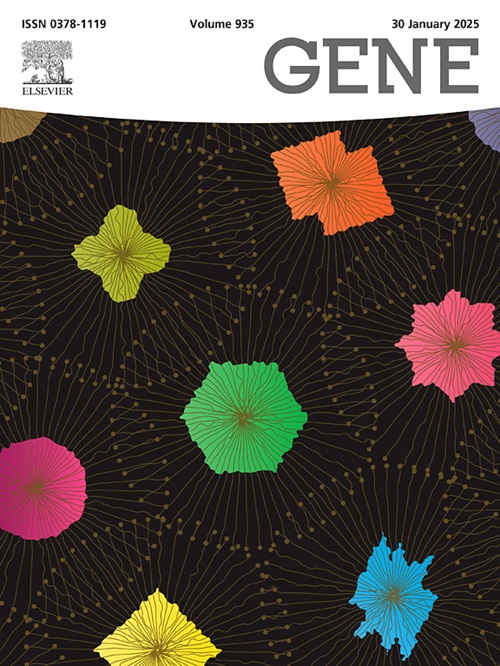Exploring the functional and prognostic roles of EPHX4 in pancreatic cancer: Insights from bioinformatics and experimental validation
IF 2.6
3区 生物学
Q2 GENETICS & HEREDITY
引用次数: 0
Abstract
Background
Epoxide hydrolase-4 (EPHX4) belongs to the epoxide hydrolase enzyme family, but its biological function remains unclear, especially its potential involvement in the development of pancreatic tumours. This research sought to examine the function of EPHX4 in pancreatic adenocarcinoma (PAAD).
Methods
The expression of EPHX4 across cancers was examined through The Cancer Genome Atlas (TCGA). Bioinformatics was employed, leveraging multiple databases to investigate EPHX4 gene expression in pancreatic cancer and its association with survival prognosis, functional enrichment, immune infiltration, tumour mutation load, and drug sensitivity, among other variables. To evaluate EPHX4 expression in PAAD cells, Western blotting and reverse transcription quantitative PCR were used. A series of in vitro functional experiments was performed to assess the proliferation, migration, and invasion of PAAD cells.
Results
EPHX4 expression was markedly elevated in a number of malignancies, including PAAD, and was associated with patient sex, clinical stage, and metastasis to the lymph nodes. High EPHX4 expression was significantly associated with a worse outcome in PAAD patients. According to functional and enrichment studies, EPHX4 is involved in many signalling pathways linked to cancer. The study of immune infiltration revealed that EPHX4 was connected to the existence of a variety of immune cells inside the tumour. Our study revealed that EPHX4 knockdown significantly decreased PAAD cell migration, proliferation, and invasion.
Conclusion
EPHX4 is highly expressed in PAAD and independently predicts poor survival. Functional experiments demonstrate its tumor-promoting effects. Its involvement in multiple cancer-related signaling pathways and immune regulation mechanisms highlights the dual prognostic and therapeutic potential of EPHX4 in PAAD.
探讨EPHX4在胰腺癌中的功能和预后作用:来自生物信息学和实验验证的见解
环氧化物水解酶-4 (EPHX4)属于环氧化物水解酶家族,但其生物学功能尚不清楚,特别是其在胰腺肿瘤发展中的潜在参与。本研究旨在探讨EPHX4在胰腺腺癌(PAAD)中的功能。方法通过肿瘤基因组图谱(TCGA)检测EPHX4在不同肿瘤中的表达。采用生物信息学方法,利用多个数据库研究EPHX4基因在胰腺癌中的表达及其与生存预后、功能富集、免疫浸润、肿瘤突变负荷、药物敏感性等因素的关系。采用Western blotting和反转录定量PCR检测EPHX4在PAAD细胞中的表达。我们进行了一系列体外功能实验来评估PAAD细胞的增殖、迁移和侵袭。结果在包括PAAD在内的多种恶性肿瘤中,tsephx4的表达均显著升高,且与患者性别、临床分期和淋巴结转移有关。在PAAD患者中,高EPHX4表达与较差的预后显著相关。根据功能和富集研究,EPHX4参与了许多与癌症相关的信号通路。免疫浸润的研究表明,EPHX4与肿瘤内多种免疫细胞的存在有关。我们的研究表明,EPHX4敲低可显著降低PAAD细胞的迁移、增殖和侵袭。结论ephx4在PAAD中高表达,可独立预测预后不良。功能实验证实其促肿瘤作用。它参与多种癌症相关信号通路和免疫调节机制,突出了EPHX4在PAAD中的双重预后和治疗潜力。
本文章由计算机程序翻译,如有差异,请以英文原文为准。
求助全文
约1分钟内获得全文
求助全文
来源期刊

Gene
生物-遗传学
CiteScore
6.10
自引率
2.90%
发文量
718
审稿时长
42 days
期刊介绍:
Gene publishes papers that focus on the regulation, expression, function and evolution of genes in all biological contexts, including all prokaryotic and eukaryotic organisms, as well as viruses.
 求助内容:
求助内容: 应助结果提醒方式:
应助结果提醒方式:


